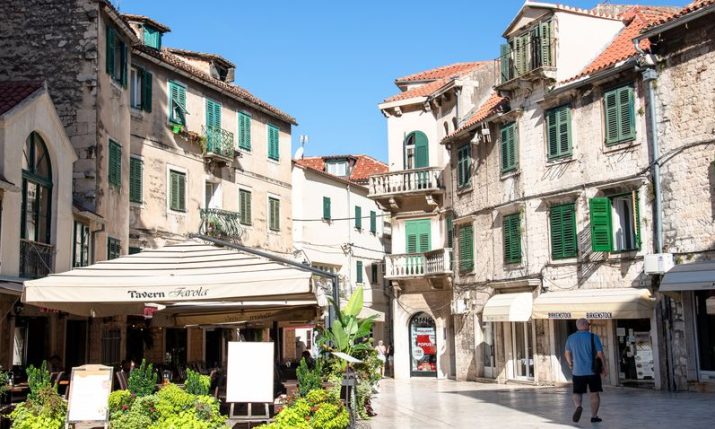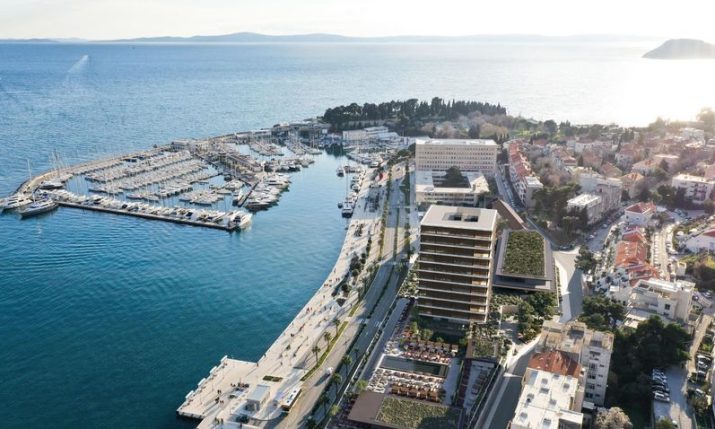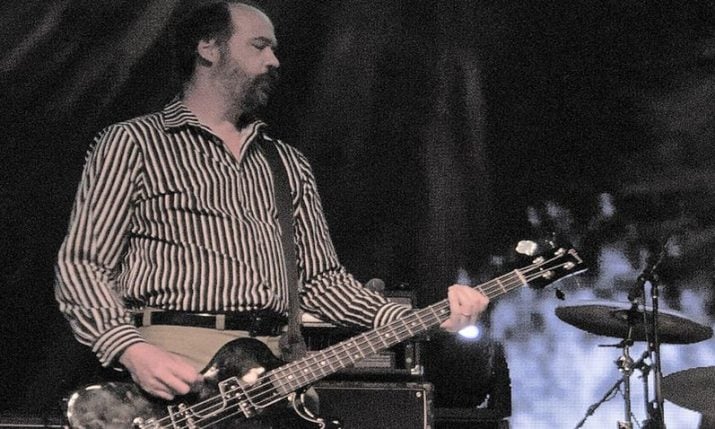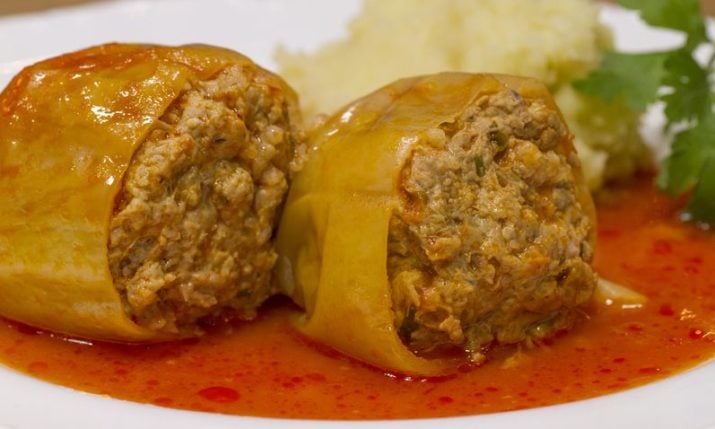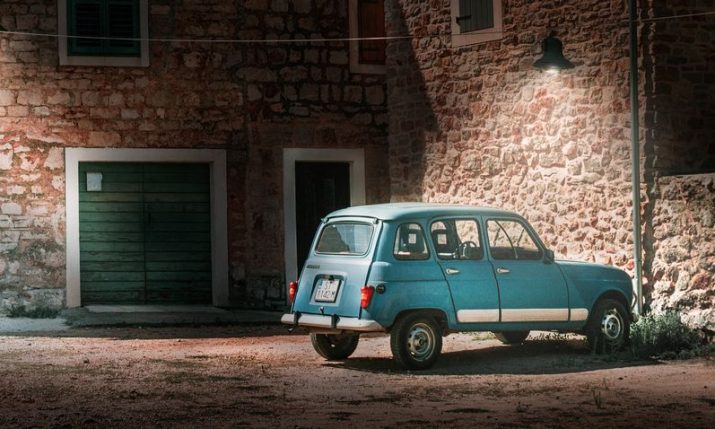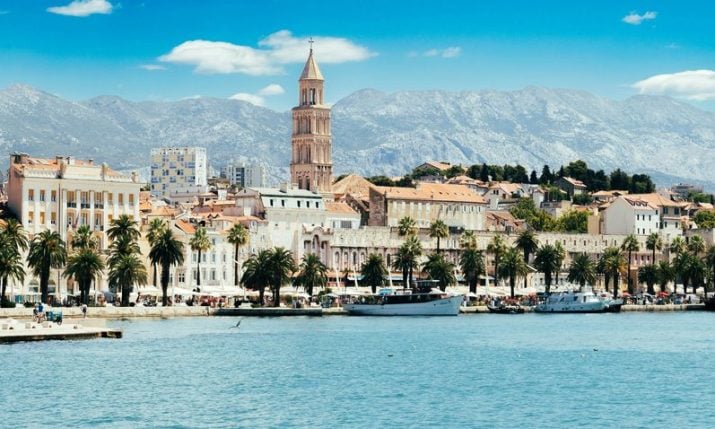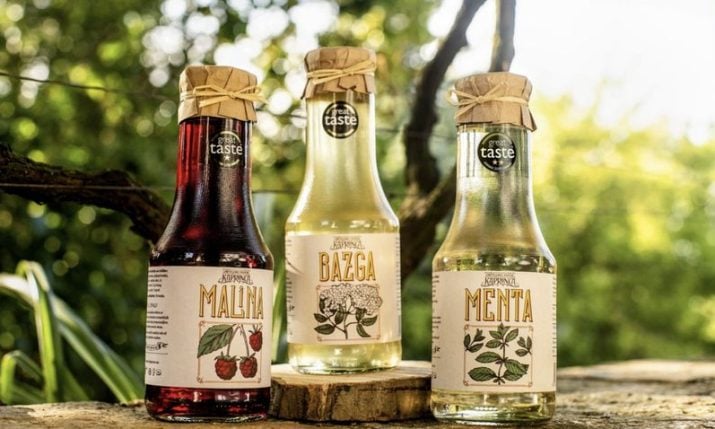Meet the Croatian craftsman forging poetry in metal
- by croatiaweek
- in Business
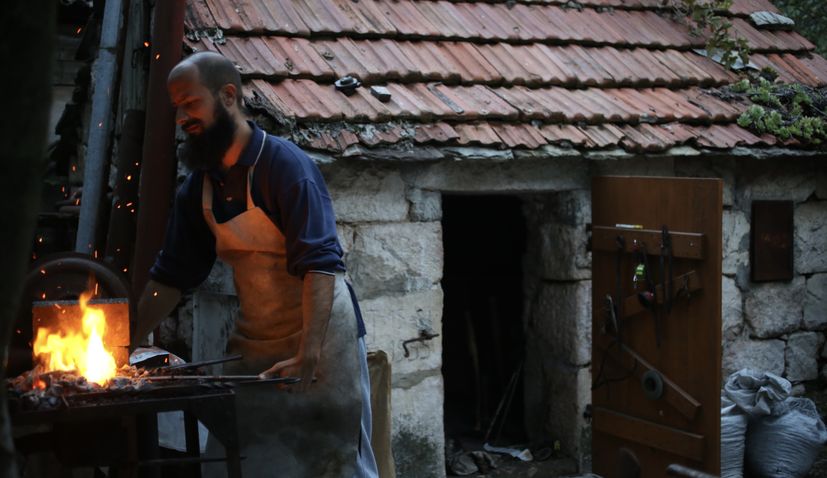
Ivan Dadić (Photo credit: Filipa Sršen)
Ivan Dadić is a former seaman from the Croatian city of Split who discovered his passion for blacksmithing after stumbling upon his grandfather’s workshop and finding a handmade railroad track anvil.
Since then, he has educated himself on the traditional methods of blacksmithing while also incorporating modern techniques. Ivan’s workshop reflects his belief that forging is a form of poetry that allows him to express his soul and mind in metal.
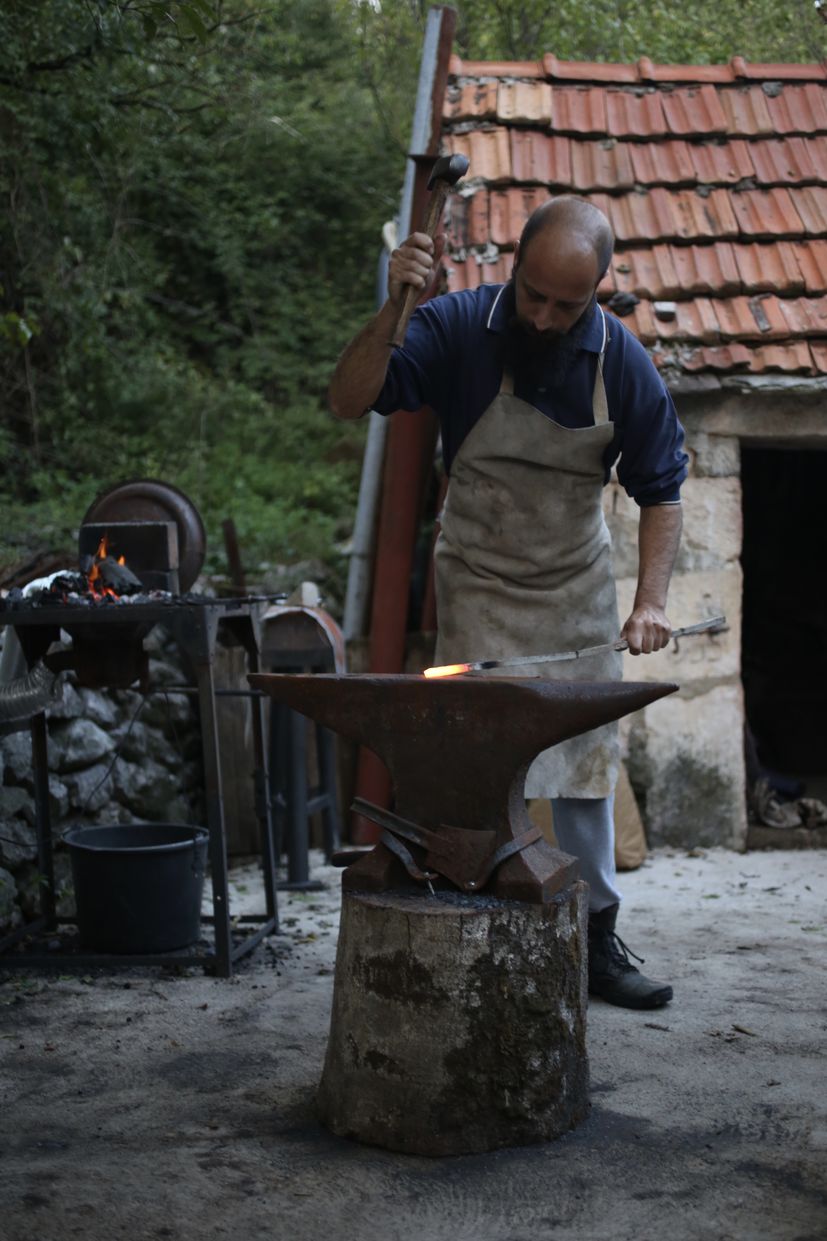
(Photo credit: Filipa Sršen)
We caught up with him to find out more and why is ultimate goal is to forge pattern welded Damascus swords.
How did a seaman from Split end up in the blacksmith trade?
Well, to understand how I finally ended up in the blacksmith trade, one must understand how it all began. Two events simultaneously occurred while I was a teenager on summer break. First, I discovered my late grandfather’s workshop and started to clean and restore it. While removing the layers of rust and dust that had been collecting over decades, I discovered many wonderful tools, but was most fascinated by some peculiar hammers and one handmade railroad track anvil.
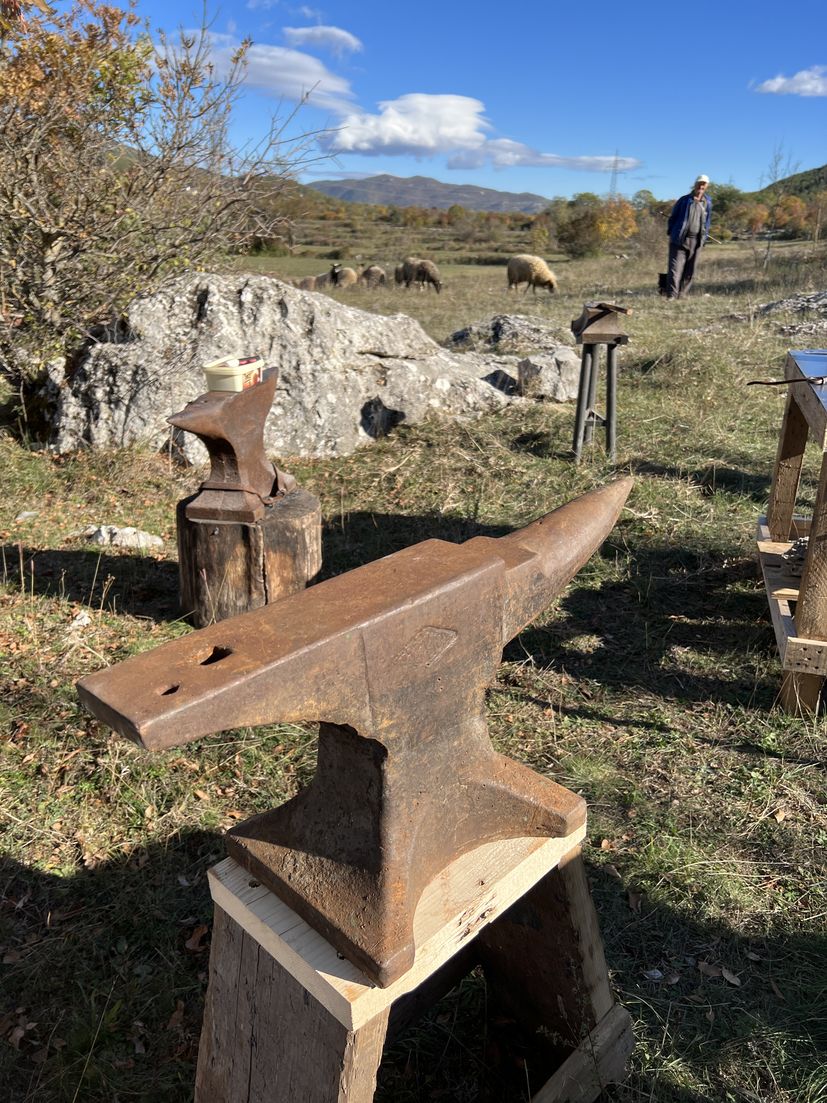
(Photo: Poema Incudis)
That workshop felt like a long forgotten crypt of a bygone era, and I still don’t know why, but that primitive anvil seemed like the crown jewel of that treasure cave.
The second event happened just a few days later, when I was clearing the garden with my family. All the branches and dry grass were piled up and burned in the evening. A big bonfire lasted through the night and by accident a long iron bar was left in the embers. I took the bar out of the coal and was amazed by the sight of red glowing steel contrasting the dark night. “Get that anvil here!“ my father said behind me.
Together we forged that bar until it got cold. We forged and our hammer blows echoed harmoniously into the night while the sparks from the withering fire were flying up towards the starry sky. That was the moment I fell in love with blacksmithing.
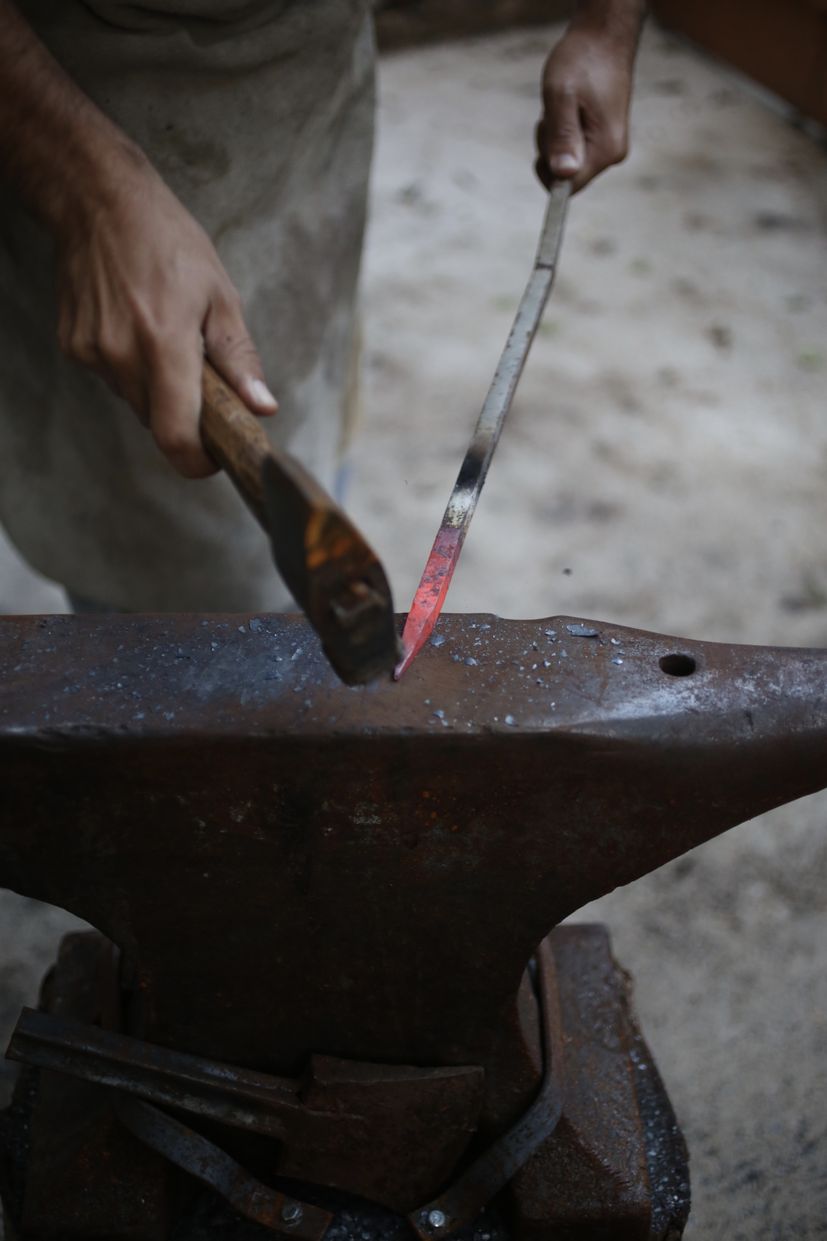
(Photo credit: Filipa Sršen)
Through the years, the desire to forge and the thirst for creation with my own hands was brewing in me. I was collecting tools and educating myself through reading and watching literally everything about blacksmithing that was available online. And so, a few years ago the desire and the will to forge and create with hammer and anvil fully matured. I left the seamen’s life behind me and started doing what I felt I was born to do.
Your workshop can be described as both traditional and modern. What would be traditional, and what is the modern component of your work?
It is traditional in the sense that I use a charcoal fire and not a propane forge. Sometimes I push air into my fire with an electrical fan and sometimes with a hand crank blower. I do not use a modern welder but forge weld my components. Instead of an electrical power hammer I prefer a friend with a sledgehammer whom I fuel with good beer. But what I consider to be the core of my traditional essence, is the desire to preserve the knowledge of the traditional method and not letting it go extinct, just because there is a faster modern way.
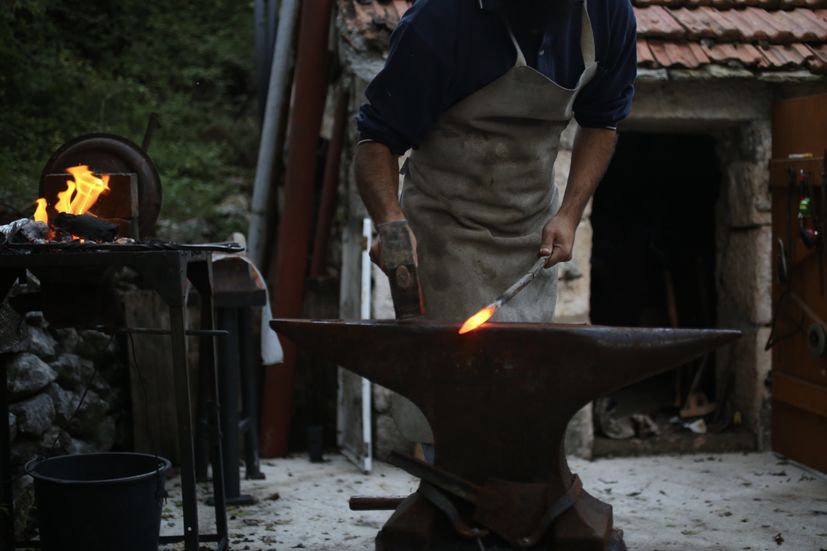
(Photo credit: Filipa Sršen)
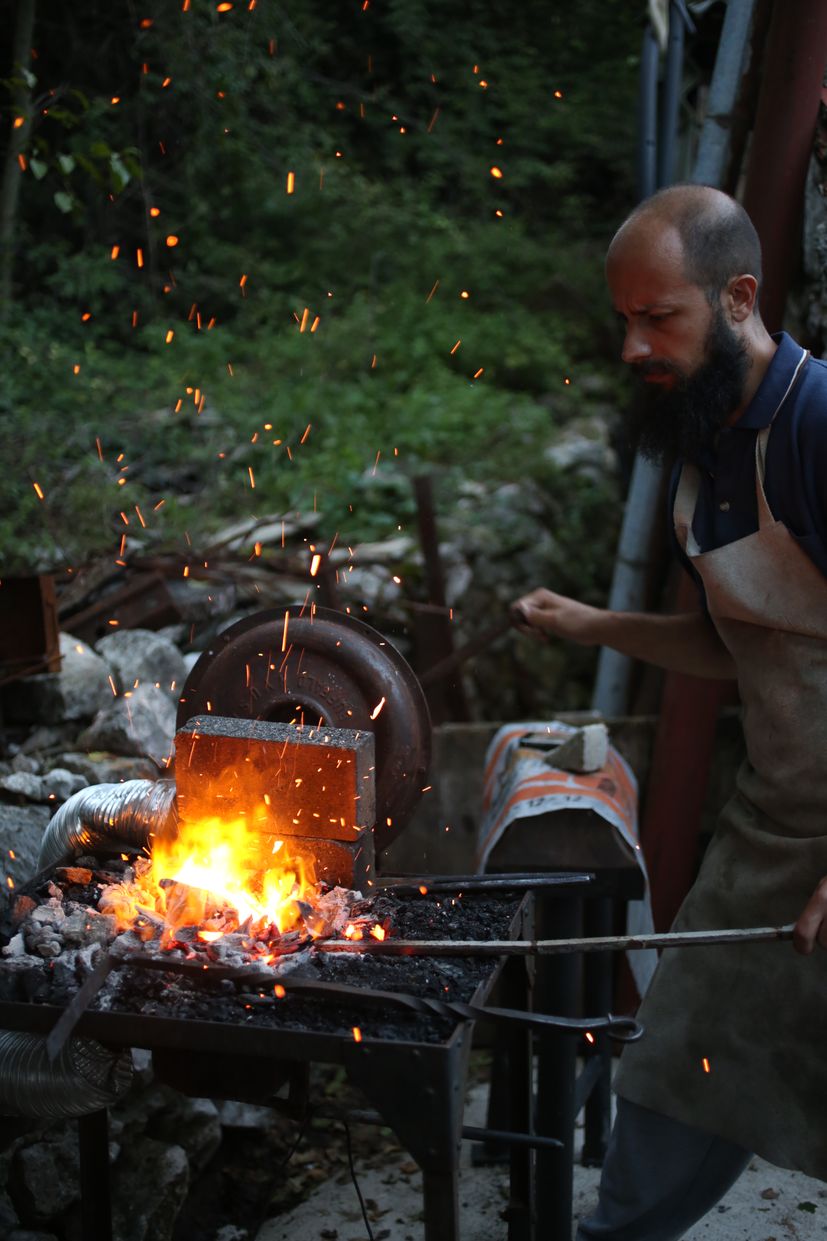
(Photo credit: Filipa Sršen)
A blacksmith should know how to maintain a coal fire before he jumps to a propane fire that requires no maintenance while working. A traditional blacksmith must first know how to move steel with his own hammer before he uses the mighty blows of the power hammer.
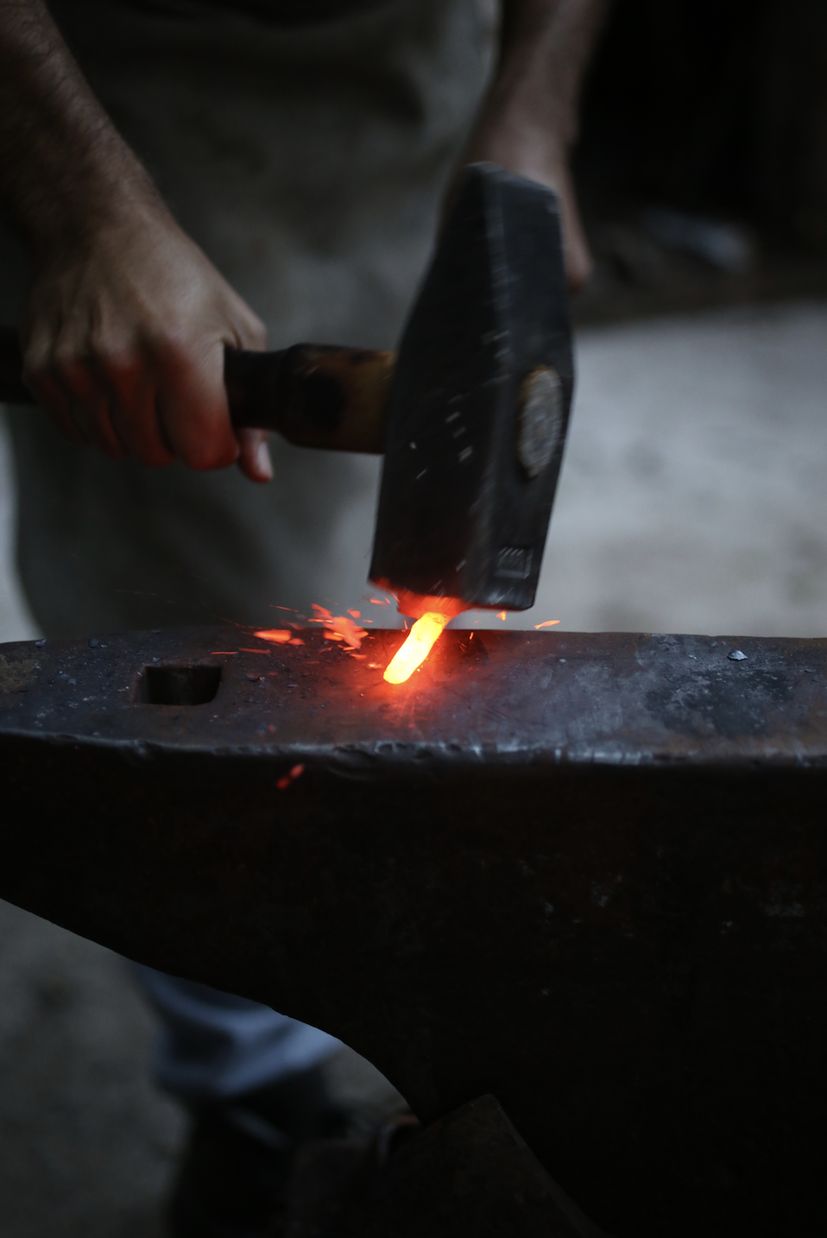
(Photo credit: Filipa Sršen)
One must embrace innovation, but it is a true shame to forget the old ways which in the blacksmith’s trade, in most cases, are the best ways. No modern method can replace forge welding for example, but also, no old method can give me the precise temperature in Celsius as a modern electrical heat treatment kiln can. I try to keep that balance and take the best from both worlds.
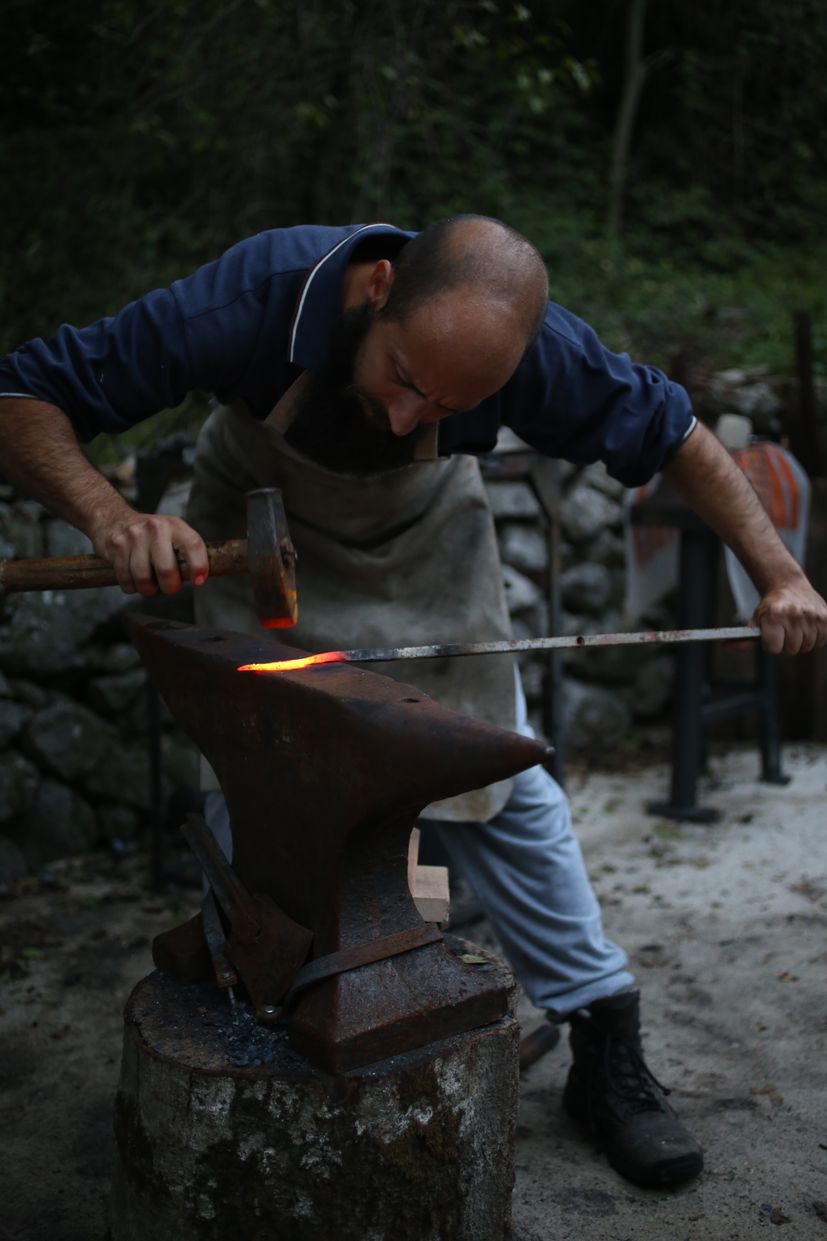
(Photo credit: Filipa Sršen)
Your workshop, and your Instagram account is called Poema Incudis, what is the meaning behind it?
Translated from the Latin, Poema Incudis means “The Poem of the Anvil“. I consider poetry to be the reflection of the poet’s soul. Poetry can be expressed not only through writing, but also through composing, carving, building, designing, etc.
In my case, it is through forging, that I imprint my soul and mind into metal. Also, poetry is something that should uplift the human spirit and celebrate the beauty of creation. I try to create beautiful things and inspire people who view them and use them.
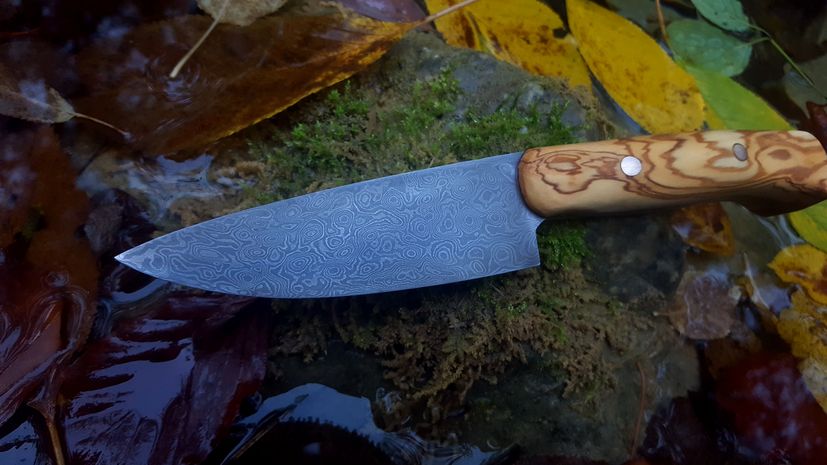
(Photo: Poema Incudis)
Most blacksmiths focus on a certain type of product, like knives or swords, but your span is quite broad, what do you make? Is there a product that you long to make, like a Holy Grail of your work?
Now when I think about it, you are quite right, my span is very broad, perhaps even too broad! I guess it is so because it’s hard for me to decline a challenge. Thus, the span spreads from custom made rings and jewelry to Damascus kitchen knives; from blacksmithing tongs to port wine tongs; from ornamental house decorations to pattern welded historical knife recreations.
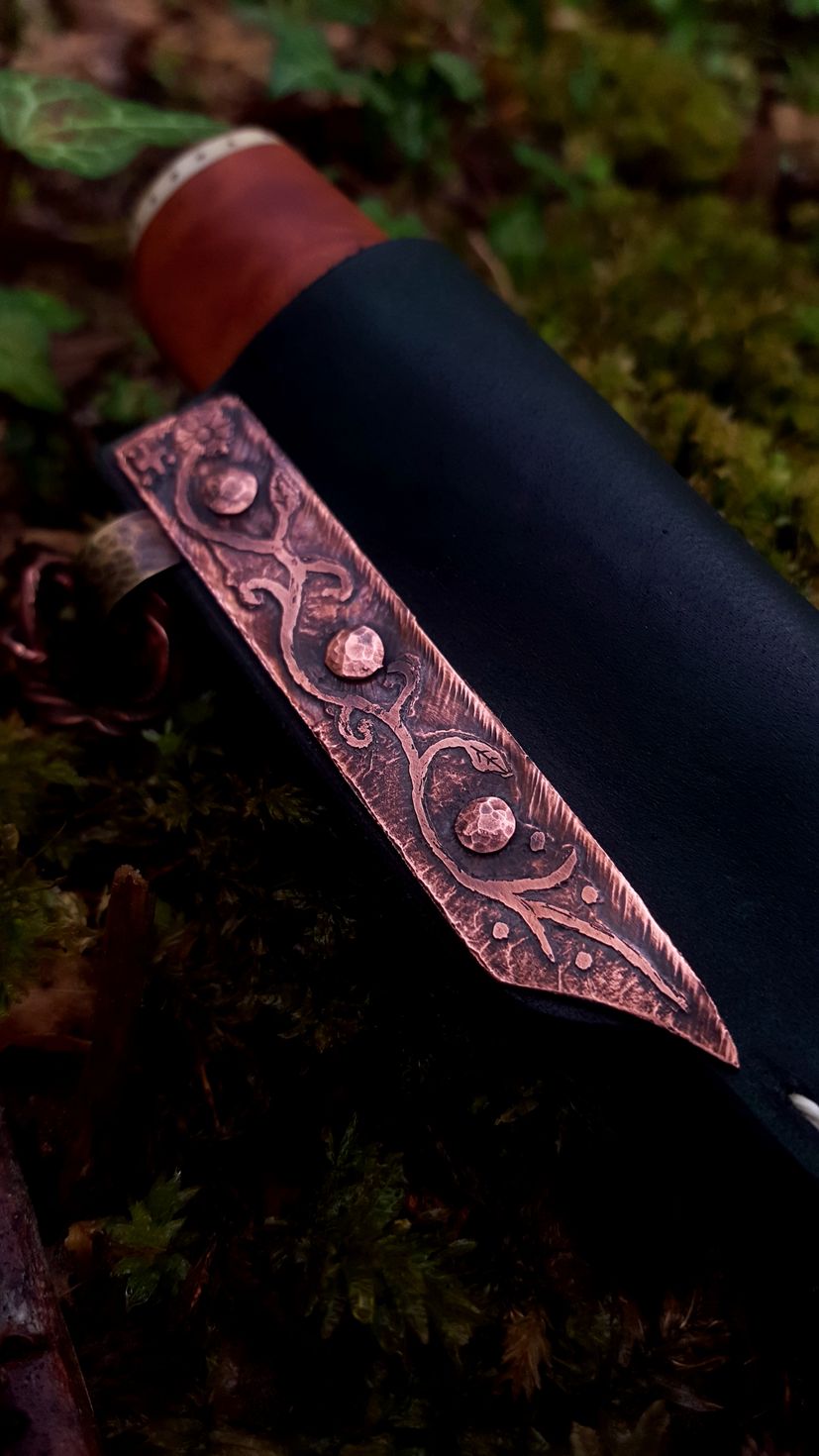
(Photo: Poema Incudis)
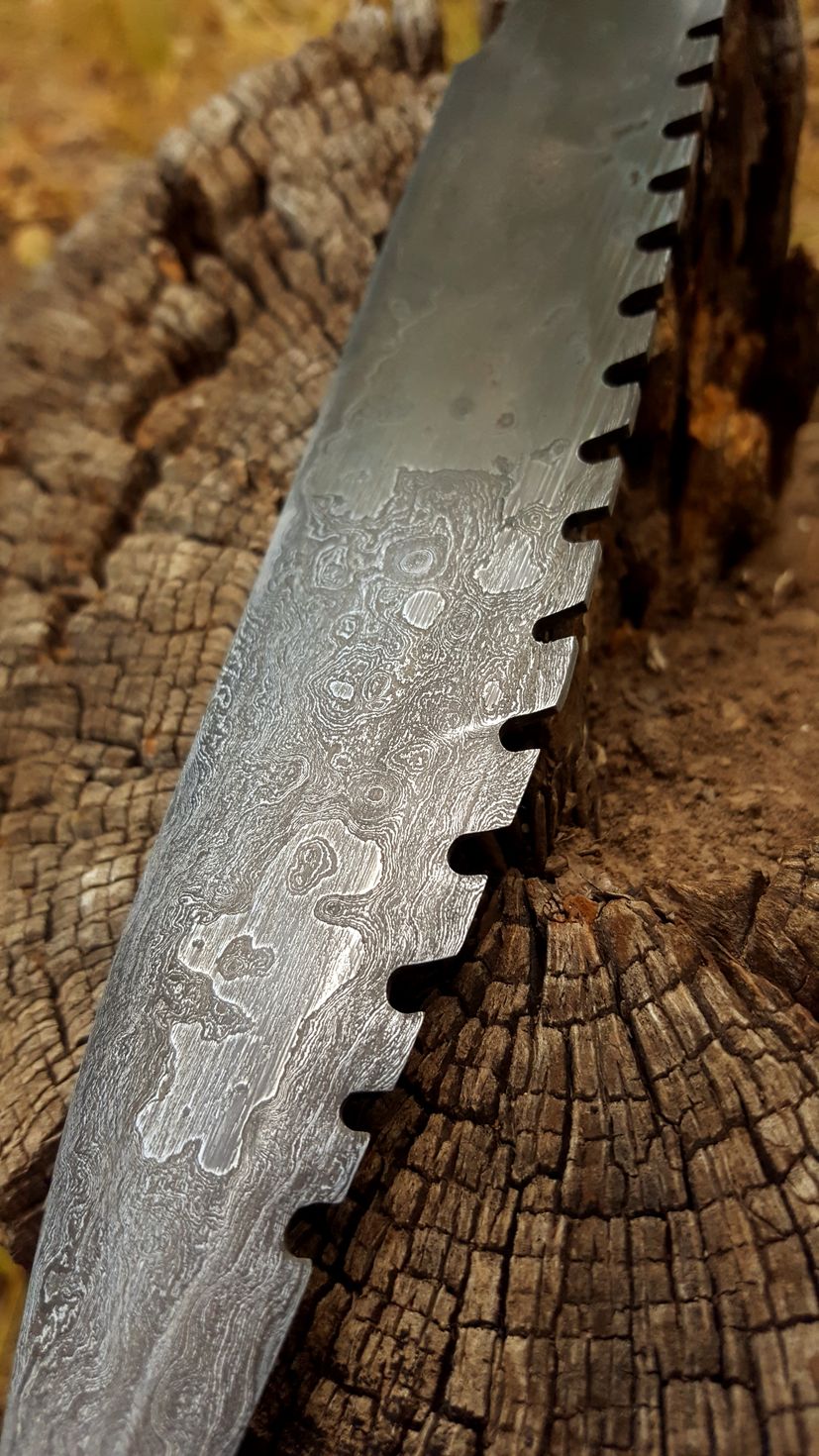
Rambo Damascus (Photo: Poema Incudis)
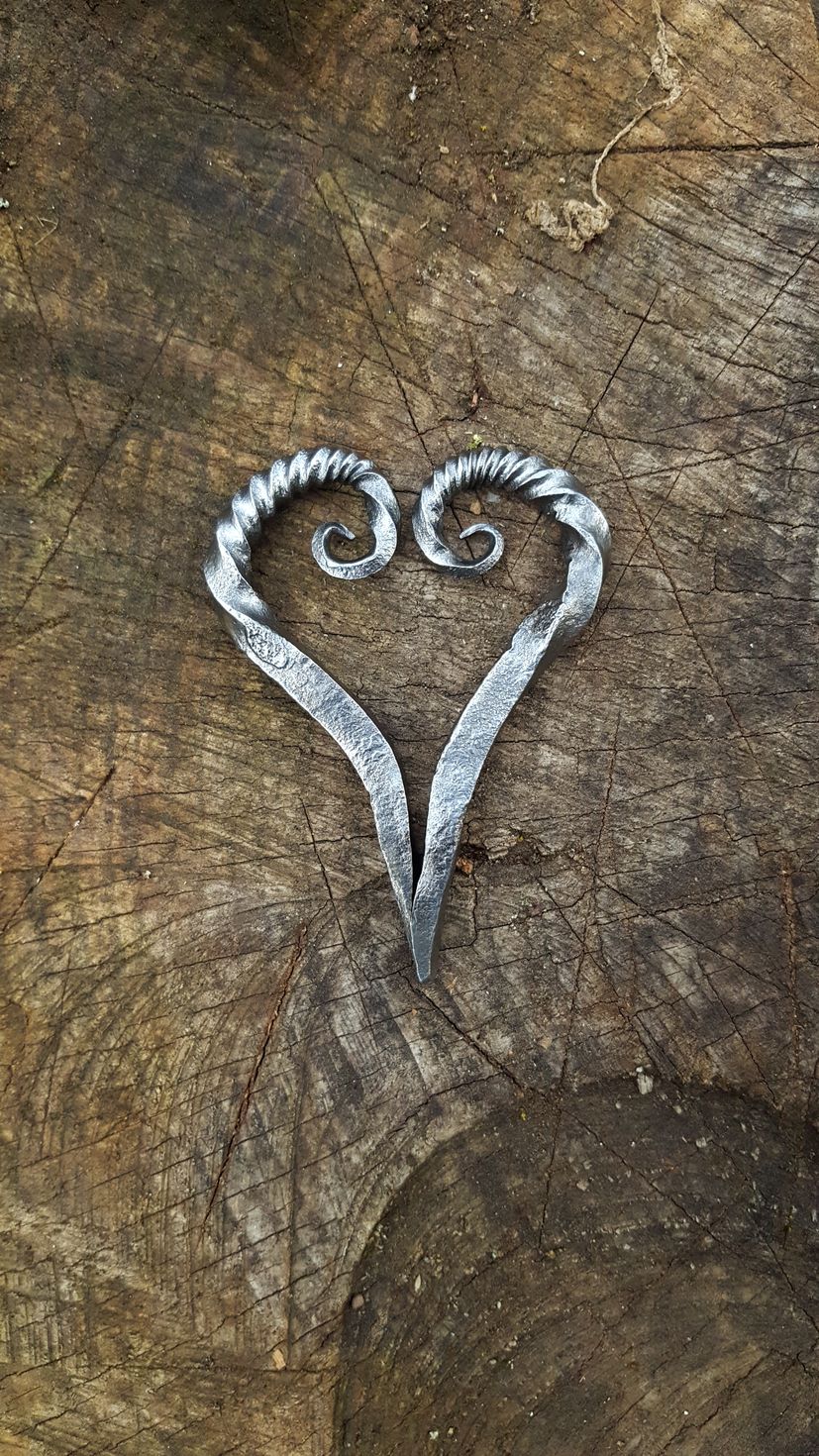
(Photo: Poema Incudis)
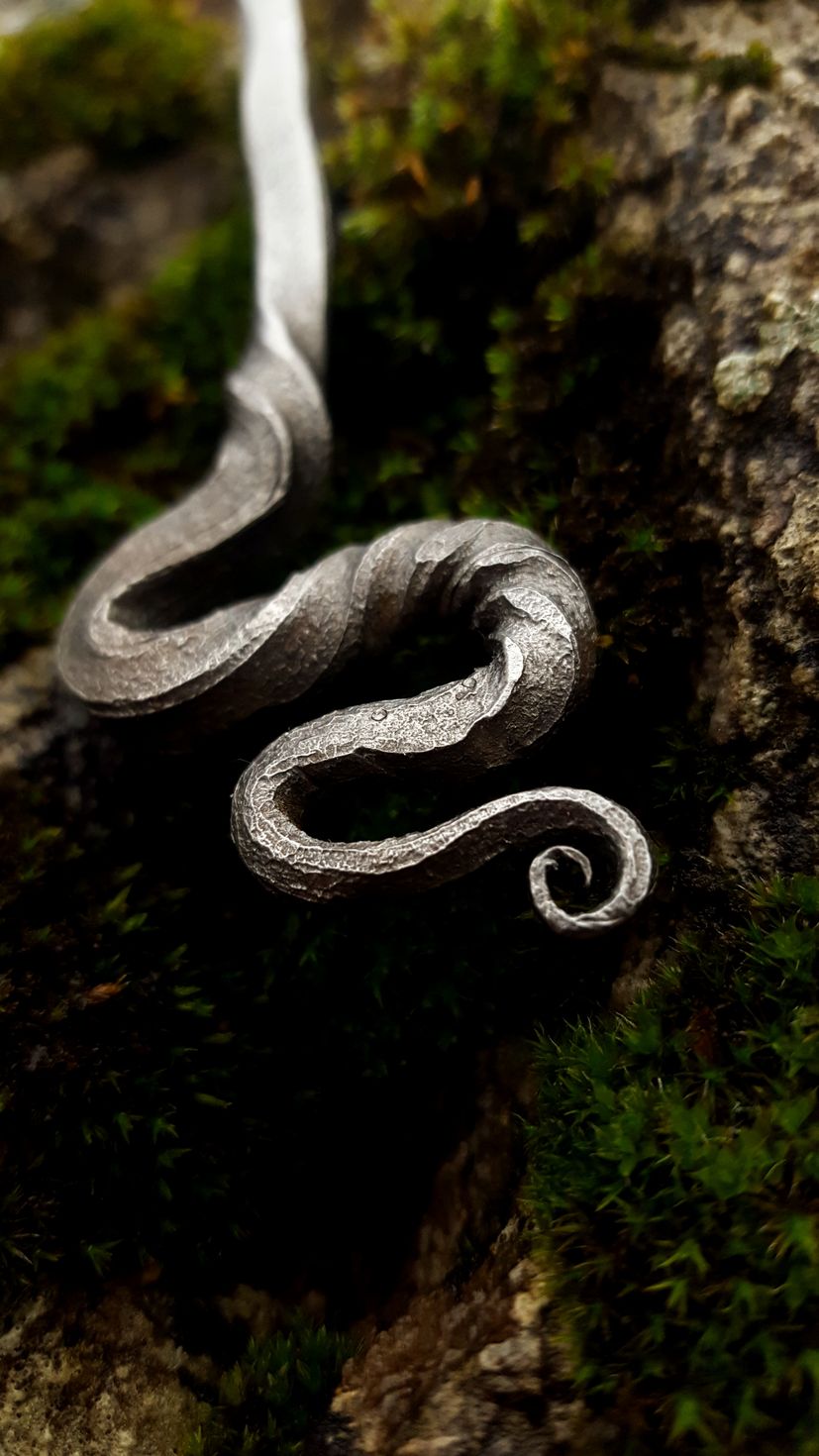
(Photo: Poema Incudis)
My current focus is on the kitchen and hunting knives and later it will be camping and woodworking tools like axes and chisels, but the ultimate goal is forging swords, the Holy Grail being pattern welded Damascus swords.
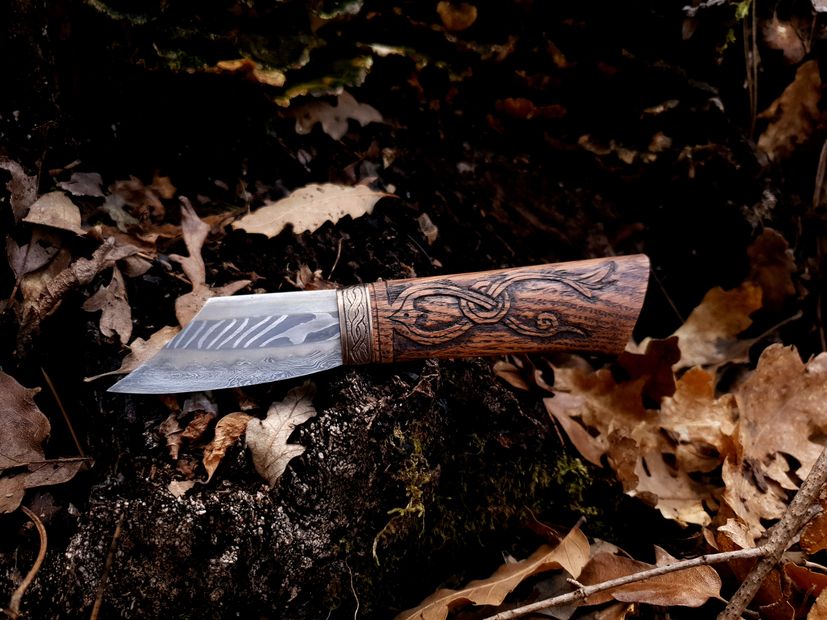
Pattern-welded wolf-tooth Damascus (Photo: Poema Incudis)
What is Damascus steel and how do you make it?
Damascus steel is a popular name for a multi-layer steel. Historically it was used throughout the world (in pop culture mostly recognised in katana blades and viking swords), as a display of the quality of the material and craftsmanship. To put it simply, two different types of steel are forge welded together and continuously folded over and forge welded again. The more layers you stack, the more intricate the pattern will be. Or you can use the low layers for bolder designs and in some cases, one can combine the two. Imagination is the only limit there.

(Photo: Poema Incudis)
Once the blade is forged, heat treated and polished, it is then placed in acid. Due to the different chemical composition of the steel, the contrast is revealed. The steel that has nickel in it resists the acid and remains shiny and the steel with no nickel darkens and thus in the contrast between the two, the pattern is revealed.
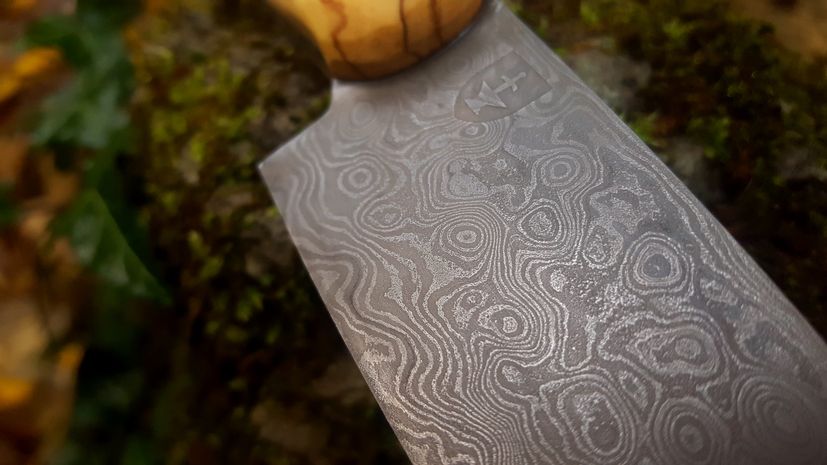
(Photo: Poema Incudis)
A big part of your work is inspired by Croatian and international folklore and mythology. How did Tolkien and Ivana Brlić Mažuranić enter your workshop?
To paraphrase Tolkien, the language of myth expresses the truths that are beyond us. When Lúthien gives up her immortality for Beren and when Sam fights Shelob to save Frodo, we learn more of true love, courage and friendship than any encyclopaedic definition or any psychological textbook can tell us.
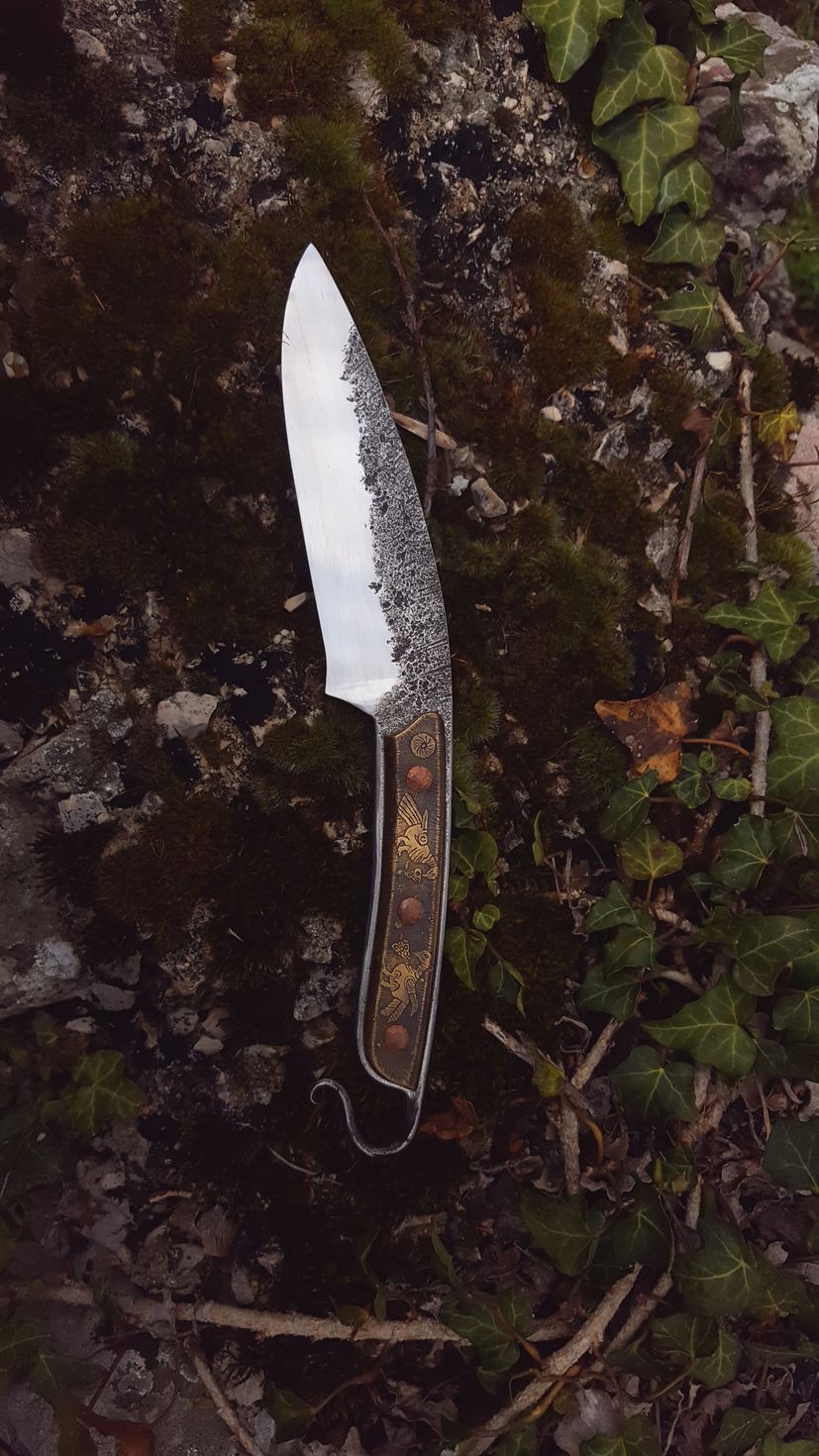
(Photo: Poema Incudis)
When the mother in Stribor’s forest was given a choice of everlasting happiness and forgetting her son, or to remember her son and remain forever in misery, her choosing the latter and ultimately getting her son back and her misery going away, teaches us motherly love and self-sacrifice. Those and many more myths have been on my mind ever since I was a child. Through my work, I try to create the artifacts and symbols that remind me of these stories.
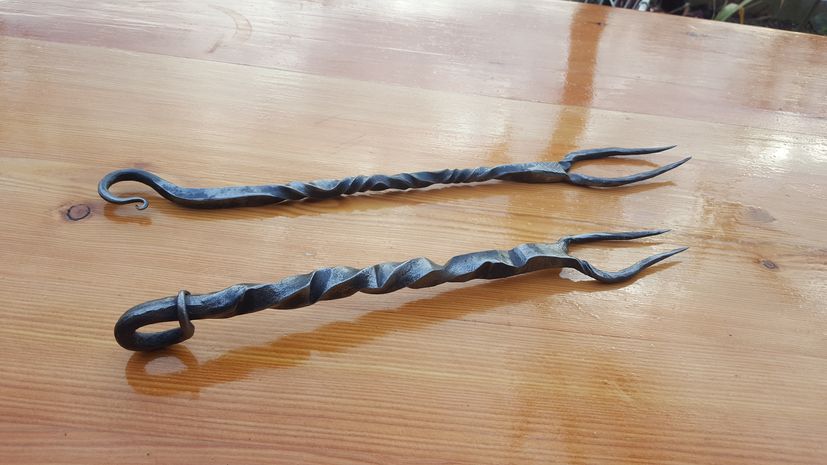
(Photo: Poema Incudis)
Sometimes I create something completely new and implement some of my own storytelling. For example, “Einhards Memory“, the knife that travelled through the old Croatian Kingdom, or the upcoming “Blade of Croatian History“ tells a tale all the way from Illyrian and Roman times. Historically inspired, but always with a mythopoetic twist, they will form part of my “Lost Artifacts of the Croatian Kingdom“ collection.

(Photo: Poema Incudis)
Do you produce your own iron?
I don’t produce my own iron, but I do occasionally produce my own steel. To my knowledge, and I might be totally wrong here, only the Museum of Koprivnica attempted to produce their own iron from the ore and perhaps also steel. But I think I am the only blacksmith in Croatia who dared to produce homemade steel.
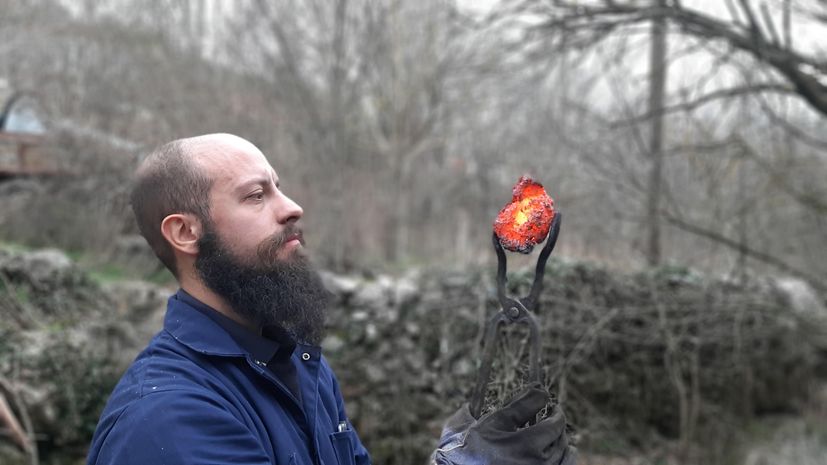
Ivan steel making (Photo: Poema Incudis)
What’s the blacksmith scene like in Split?
In Split, there’s not much of a scene. There are some knife-makers who make knives by stock removal techniques but only a few actually forge their knives and items. To my knowledge, there are some who still keep their anvils ringing in Dalmatia, but less than a handful. I think that only 50 years ago, the numbers were very different.
At least every city or large village had a few of them and 80 years ago almost every village had a blacksmith, for sure. There is rich history of blacksmithing in Dalmatia, but sadly, due to mass production, most of them stopped working and the trade became almost extinct.
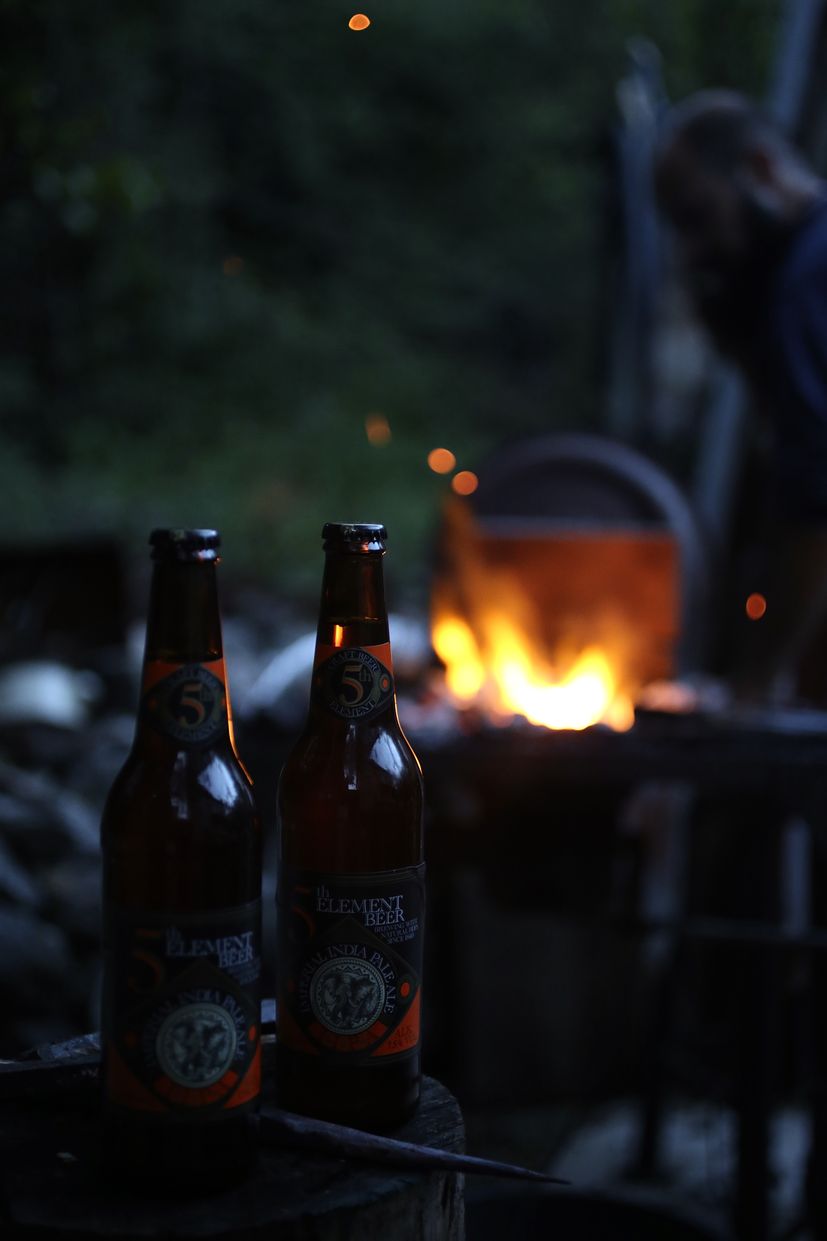
(Photo credit: Filipa Sršen)
But now the tides are turning and people are beginning to appreciate handcraft items again. No mass production factory knife can match the quality of a hand-forged blade, nor can a factory dedicate their output to the desires of a single customer, like a blacksmith can.
Do you sell your work, and if so, where can one buy them?
Yes I do. Most of my work is custom-made. People usually approach me through social media and tell me what they need. Then I proceed to the design and when an agreement is reached, I start making the product. I often display finished products on my Instagram @poema_inducs or on Facebook.
Do you hold blacksmith workshops?
As I said, the craft almost went extinct and if we don’t transfer the knowledge to future generations it might be on verge of extinction again. My passion is not only for creating, but also for teaching, so I hold blacksmithing and knife-making workshops to keep the craft alive. The people attending vary a lot: from enthusiastic individuals, to groups of friends hanging out and forging together.
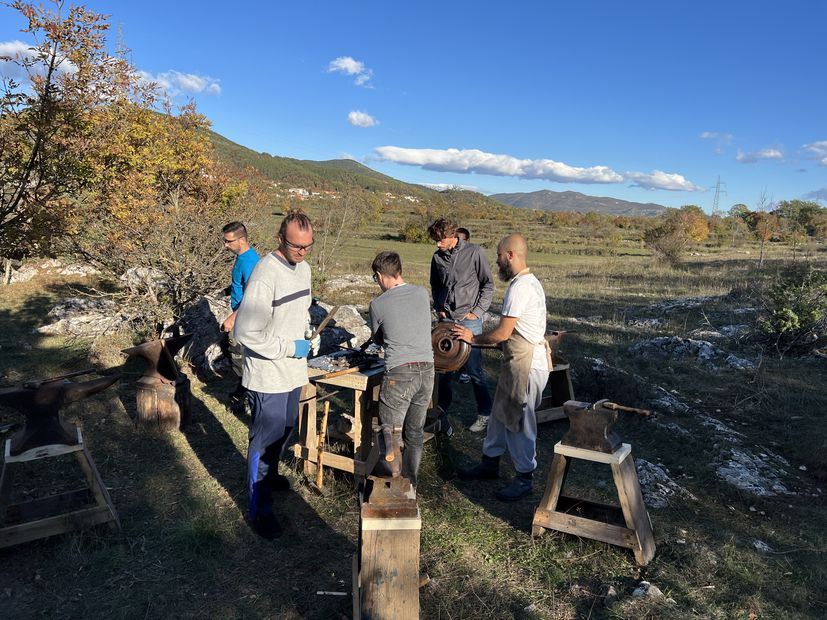
(Photo: Poema Incudis)
From wives gifting their husband a knife-making class as an anniversary gift, to work colleagues on electronic detox team-building. I also host these workshops outside in nature, for the full city escape.
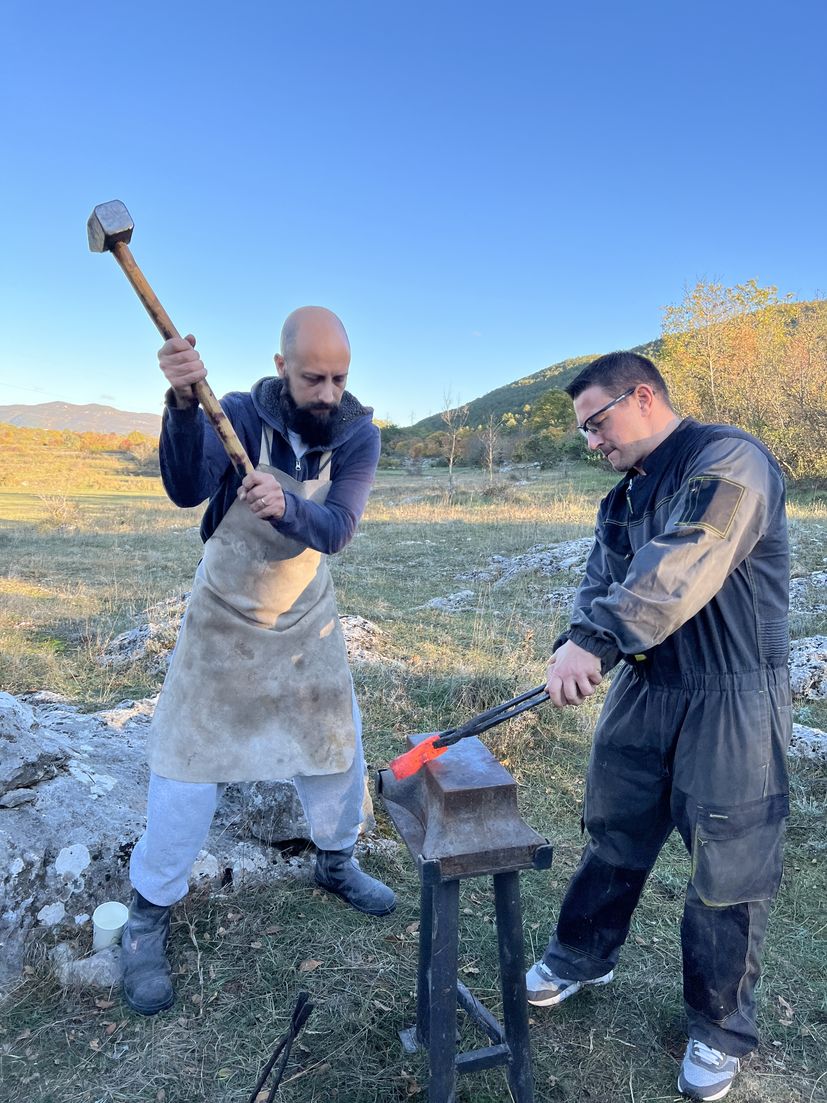
(Photo: Poema Incudis)
What are your thoughts about blacksmith tourism?
I have given a lot of thought to that idea in the past few years. It would certainly be a unique experience to provide to tourists, as there aren’t many “forge your own souvenir“ offers on the table today. Thankfully this year I will be cooperating with the agency „Intours DMC“ and we shall try to achieve that goal together and enrich the tourist scene in Split.
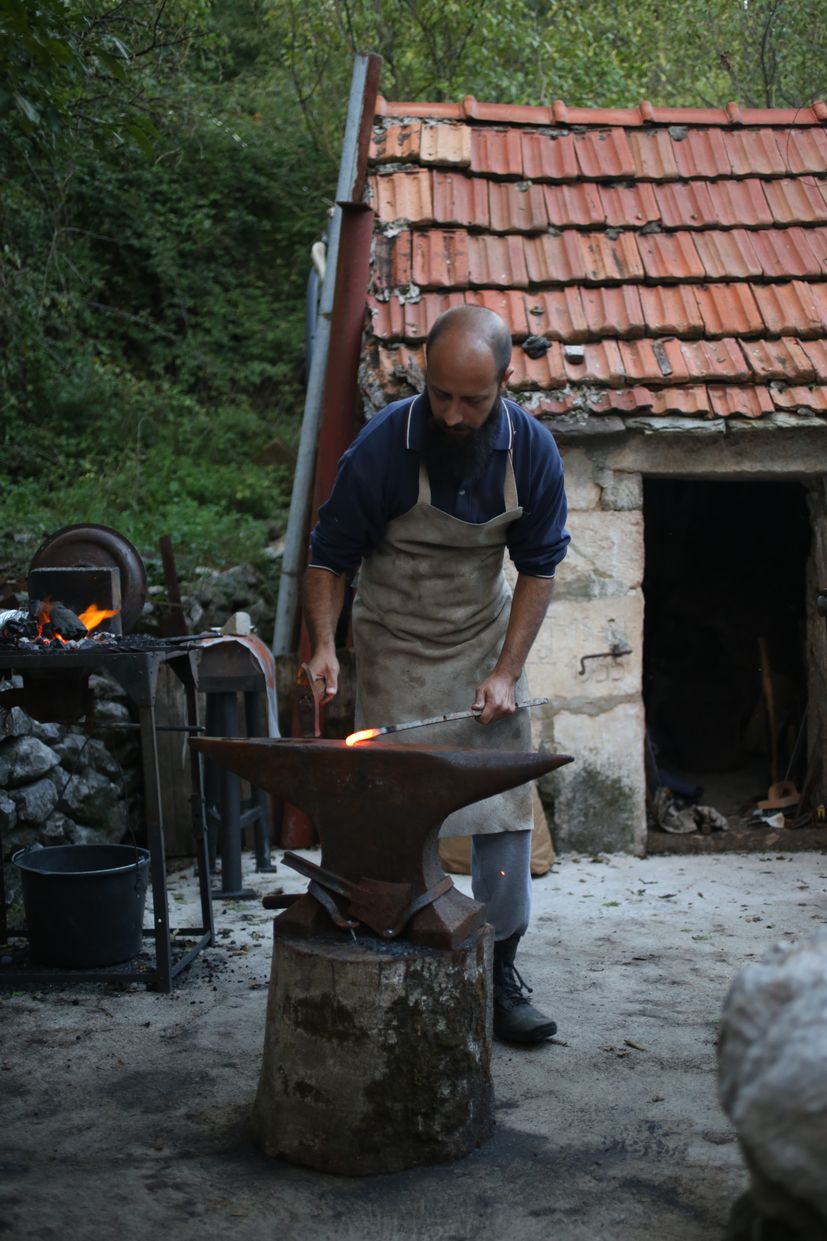
(Photo credit: Filipa Sršen)

